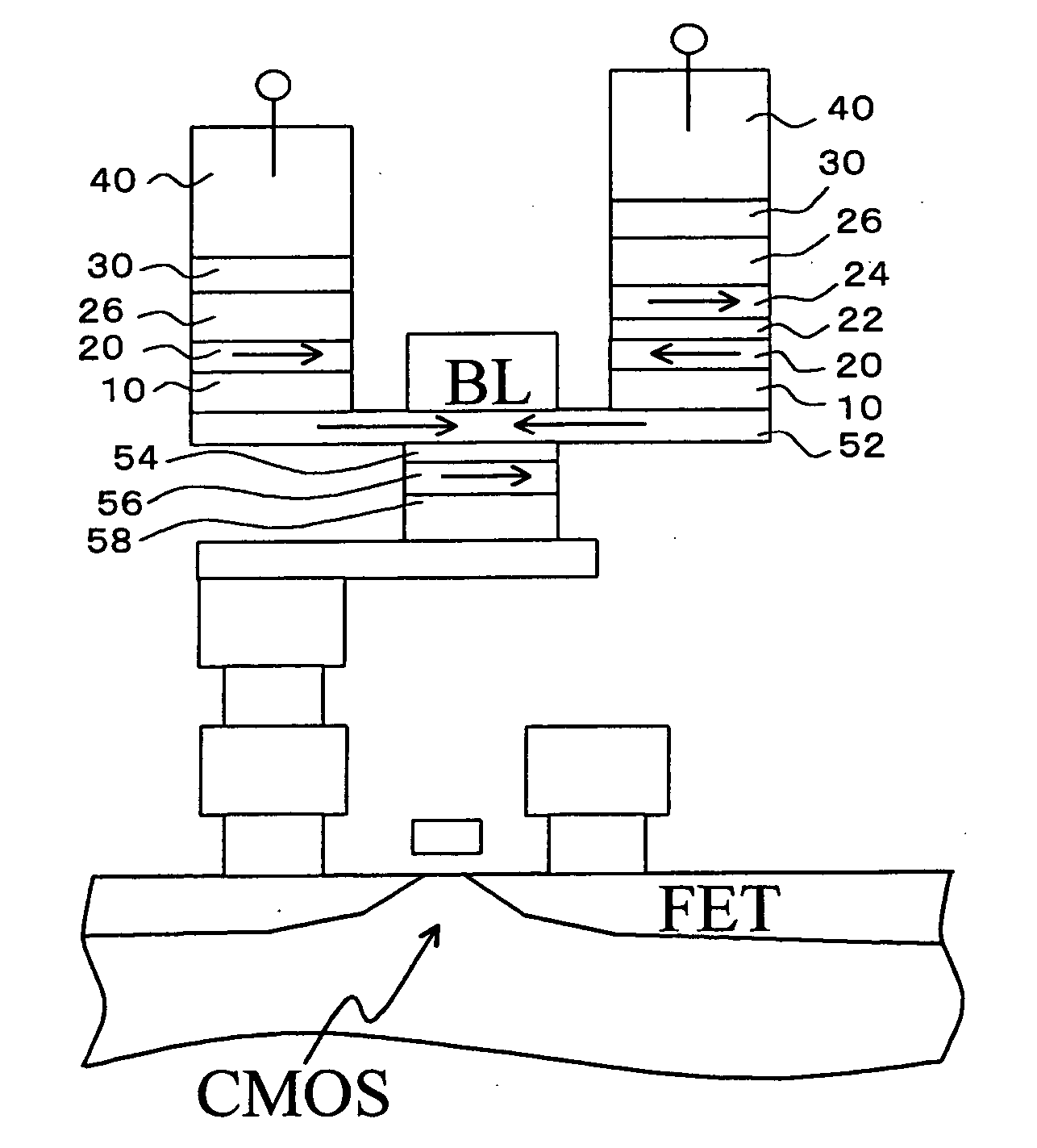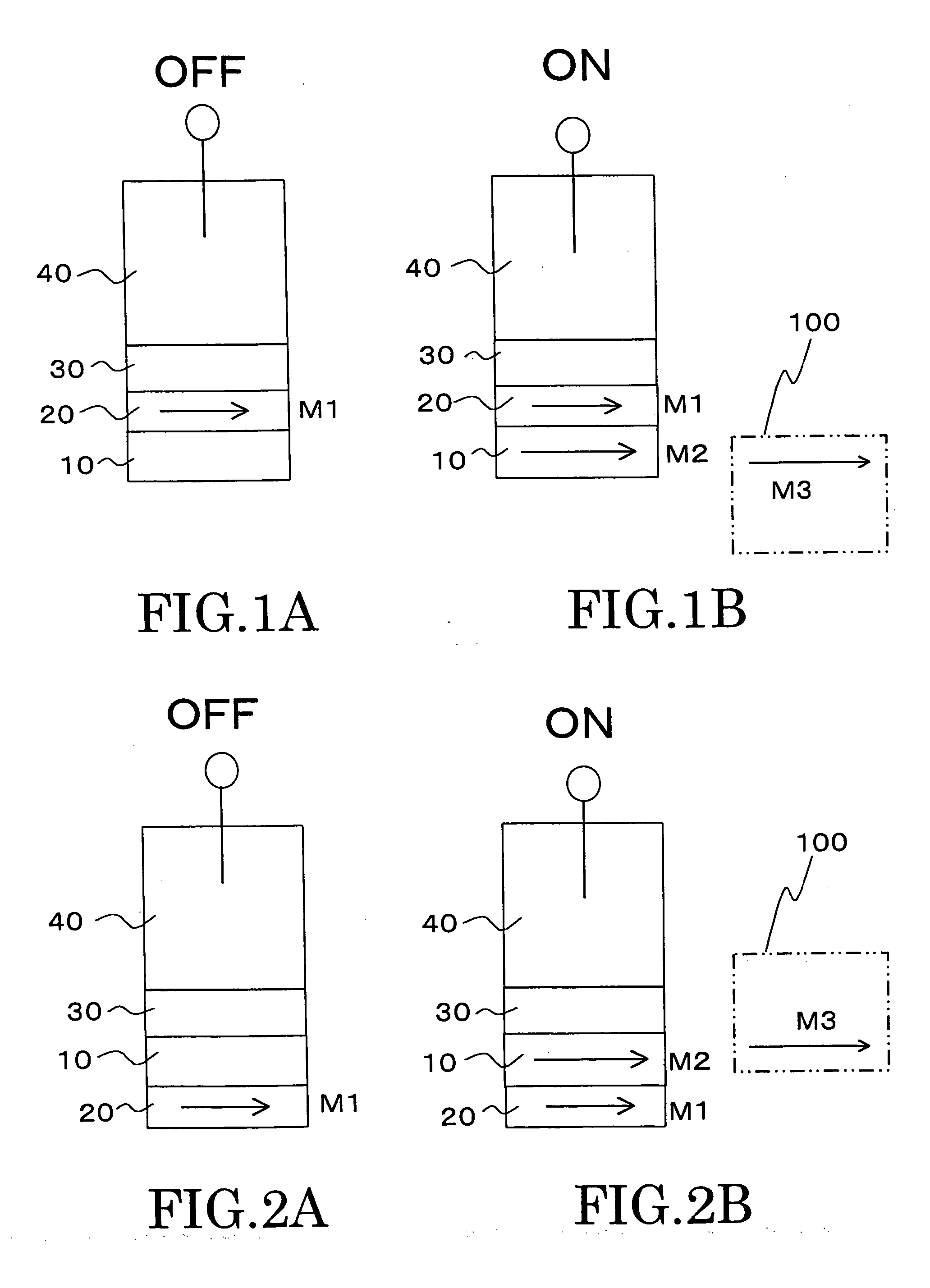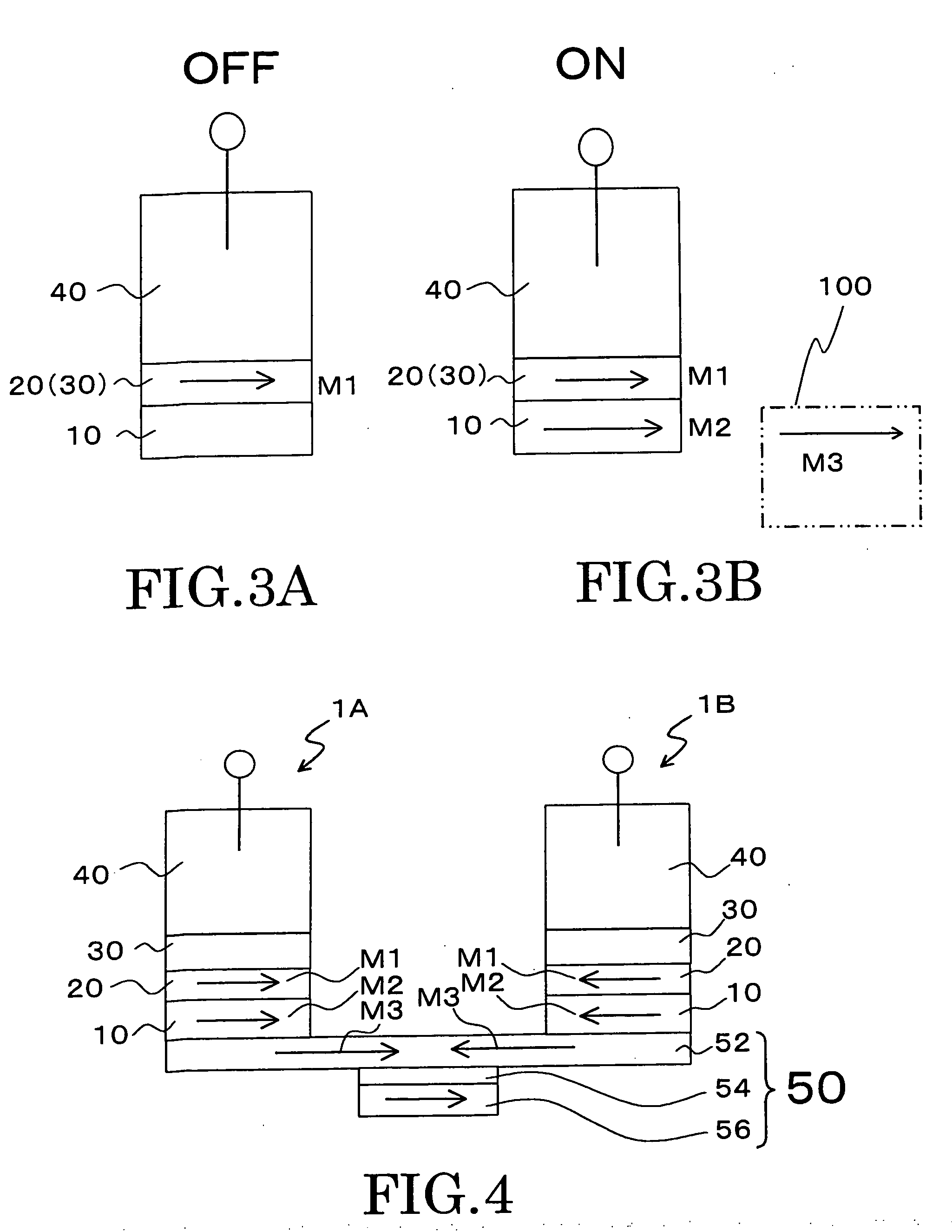Magnetic switching element and a magnetic memory
a switching element and magnetic memory technology, applied in the manufacture of flux-sensitive heads, instruments, transistors, etc., can solve the problems of large power consumption of a memory, inability to carry out large-scale memory, and the size cannot be decreased below semiconductor dram, etc., and achieve great merit for the industry
- Summary
- Abstract
- Description
- Claims
- Application Information
AI Technical Summary
Benefits of technology
Problems solved by technology
Method used
Image
Examples
examples
[0233] Hereafter, some embodiments of the invention will be explained in more detail, referring to a specific example of the invention.
first example
[0234] As the first example of the invention, one memory cell was fabricated on the basis of the memory array of the simple matrix structure shown in FIG. 18, the principle of the operation of the memory cell of the first type was confirmed.
[0235] It will be as the following if the structure of this magnetic memory is explained along with that manufacture procedure.
[0236] On the substrate which is not illustrated, a wiring layer with a thickness of 1 micrometer made of Cu was first produced by the damascene process as a lower layer bit line BL1. After that, an insulated layer was formed by CVD method, and then the surface was flattened by CMP (Chemical Mechanical Polishing).
[0237] Then, the stacking structure of TMR which has a ferromagnetic single tunnel junction structure was formed by a sputtering method. The material and the thickness of each layer were taken as Ta (10 nm) / Ru (3 nm) / Ir—Mn (8 nm) / CoFe (3 nm) / Ru (1 nm) / CoFe (3 nm) / AlOx (1 nm) / CoFeNi (2 nm) / Ru (5 nm) from the bo...
second example
[0245] Next, as the second example of the invention, one memory cell was fabricated on the basis of the memory array of the simple matrix structure shown in FIG. 20, the principle of the operation of the memory cell of the second type was confirmed.
[0246] It will be as the following if the structure of this magnetic memory is explained along with that manufacture procedure.
[0247] On the substrate which is not illustrated, a wiring layer with a thickness of 1 micrometer made of Cu was first produced by the damascene process as a lower layer bit line BL1. After that, an insulated layer was formed by CVD method, and then the surface was flattened by CMP (Chemical Mechanical Polishing).
[0248] Then, the stacking structure of TMR which has a ferromagnetic single tunnel junction structure was formed by a sputtering method. The material and the thickness of each layer were taken as Ta (2 nm) / Ru (3 nm) / Pt—Mn (12 nm) / CoFe (2.5 nm) / Ru (1 nm) / CoFe (3 nm) / AlOx (1 nm) / CoFeNi (1.8 nm) / Ru (1.5 n...
PUM
 Login to View More
Login to View More Abstract
Description
Claims
Application Information
 Login to View More
Login to View More - R&D
- Intellectual Property
- Life Sciences
- Materials
- Tech Scout
- Unparalleled Data Quality
- Higher Quality Content
- 60% Fewer Hallucinations
Browse by: Latest US Patents, China's latest patents, Technical Efficacy Thesaurus, Application Domain, Technology Topic, Popular Technical Reports.
© 2025 PatSnap. All rights reserved.Legal|Privacy policy|Modern Slavery Act Transparency Statement|Sitemap|About US| Contact US: help@patsnap.com



